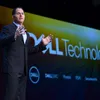Data centres remain central to the IT strategy of Indian CIOs: Dell EMC’s Kris Day
In a conversation with YourStory, Kris Day, VP, Modern Data Centre – APJ, explains how Dell EMC’s modern data centre helps CIOs manage their IT infrastructure in a more agile and cost-effective manner.
In a constantly evolving digital landscape, innovation is key to remaining relevant and in business. And IT infrastructure plays a major role in driving this innovation for corporations seeking to delight their customers in a secure and agile manner while keeping competition at bay. Helping companies figure out how they can lower their operations cost while managing enterprise applications is Dell EMC’s ‘Modern Data Center’.
The American IT firm works with corporations to help them understand which enterprise workloads require on-premise IT infrastructure, and which can be serviced over the public cloud or a managed service provider.
Kris Day, Vice President - Modern Data Center, Asia Pacific & Japan, Dell EMC, explains how a modern data centre is all about speed, agility and scalability: 50x faster in backup and 12X faster in performance, leading to 59X lower operation cost. This is a compelling offer for a CTO or CIO of a company looking to optimise cost and IT infrastructure resources, with new workloads such as artificial intelligence (AI), machine learning (ML), and IoT-based services coming to the fore.
Kris’ job entails convincing the C-suite of a corporation on the importance of adopting flash technology for their network storage needs. Relegating to the background the spinning hard disk drives (HDDs) that have long been associated with network storage, an all-flash array (AFA) uses flash media for external storage. Today, most modern companies that are cloud-first are using AFA to scale.
In a conversation with YourStory, Kris explains the need for modern data centres, and how they are relevant to a company’s IT strategy.

Kris Day of Dell
Edited excerpts of the interview:
YourStory: Where are we today in the IT storage space? In the enterprise legacy versus cloud argument, are data centres becoming more relevant than ever?
Kris Day: Organisations are making IT infrastructure decisions based on the application profile, and the underlying technology and business considerations for those specific applications. A significant number of business-critical applications will continue to run on mainframes and RISC/UNIX systems in the data centre for the foreseeable future. Then there are applications that have been virtualised, and the next logical step is to move these to a cloud-like environment.
The choice of whether the cloud should be on-premises or off-premises gets decided based on technical considerations like latency, number of data sources, and business considerations like regulatory compliance and service levels. The third category of applications are the new breed of applications designed to be ‘systems of engagement’.
These applications have popularly been built and run in the public cloud. In recent times, however, many organisations are beginning to repatriate these applications to on-premise environments.
Data centres, therefore, remain central to any organisation’s IT strategy. In an ESG survey of CIOs, 92 percent of the respondents reported that their company’s cloud strategy would include on-premises data centres.
YS: How has the external storage market grown in India and the globe over the last 10 years?
KD: The external storage market has grown at a CAGR of three percent over the last 10 years by revenue. However, it has grown at a CAGR of 32 percent in terms of terabytes shipped over the same period. The growth rate for the India storage market is consistent with the global rates. India is a big market for us.
YS: What interesting business models are emerging in storage with edge computing?
KD: Edge computing opens up exciting new use cases. However, for edge computing to be real and effective, it must have a core, and also hook up to the cloud. Any organisation looking to leverage edge computing must adopt a holistic strategy from the edge to the core to the cloud.
YS: How are Indian CIOs using data centres? What is their view, and yours, about the future tech stack for storage infrastructure?
KD: Data centres remain central to the IT strategy of Indian CIOs. What’s emerging is that Indian customers are planning to build multi-cloud environments, where the landing zone for any application is determined by its workload characteristics, economics, and business objectives.
A multi-cloud strategy allows CIOs to place applications in the right cloud environment, and seamlessly move them across to a new environment, as and when required.
YS: What does data mean for the industry's future and how will startups adopt the modern data centre?
KD: Data growth continues to accelerate in an increasingly data-driven world being transformed by digital business models. Startups find it convenient to build applications on the public cloud owing to its agility and convenience.
Many of these startups, however, have started repatriating these applications to their own data centre once their business had scaled, purely for economic reasons.
YS: How do you see Amazon getting into this business and why is Dell poised to be a leader against the competition?
KD: Dell Technologies continues to focus on solving business problems for customers. The Dell Technologies Cloud Platform allows organisations to leverage their data centres, as well as hyper-scalars in a seamless multi-cloud environment by using VMware as the ‘Operational Hub’ to manage workloads across different environments.
(Edited by Evelyn Ratnakumar)









